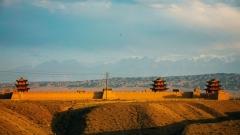Xinjiang, located on the ancient Silk Road, is not only a land of stunning deserts, mountains, and grasslands but also a melting pot of culinary traditions. Influenced by Uyghur, Kazakh, Hui, and many other ethnic groups, Xinjiang cuisine is famous for its bold flavors, hearty portions, and unique cooking methods. From fragrant pilaf to sizzling kebabs, each dish reflects centuries of cultural exchange and adaptation.
Historical Roots of Xinjiang Cuisine
The food culture of Xinjiang has been shaped by its geography and its role as a hub of trade. The Silk Road brought spices from Central Asia, cooking techniques from the Middle East, and ingredients from both east and west. With its dry climate and wide grasslands, Xinjiang became ideal for raising sheep, cattle, and horses, making mutton and beef the foundation of local diets. Wheat, rice, and fruits grown in fertile oasis towns added variety, while traditional nomadic practices emphasized roasting, drying, and steaming.
Signature Dish: Xinjiang Pilaf (Polu)
One of the most famous dishes in Xinjiang is 抓饭 (zhuā fàn), known in Uyghur as polu or pilaf.
-
Ingredients: Rice, carrots, onions, and chunks of lamb or beef, cooked in lamb oil for a rich aroma.
-
Symbolism: Traditionally served on special occasions such as weddings and festivals, pilaf represents hospitality and abundance.
-
Flavor Profile: Balanced, slightly sweet from carrots, and savory from tender meat.
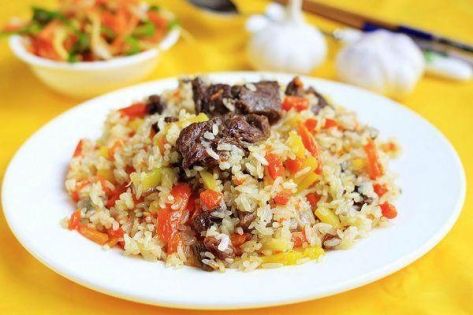
Xinjiang Kebabs: The Taste of the Street
No trip to Xinjiang is complete without trying 羊肉串 (yángròu chuàn)—lamb skewers grilled over open charcoal.
-
Preparation: Meat is marinated with salt, chili, and cumin, then roasted until smoky and juicy.
-
Street Culture: Found in night markets, bazaars, and roadside stalls, kebabs are more than food—they are part of the social fabric where friends gather and share.
-
Varieties: Besides lamb, you’ll also find beef, chicken wings, fish, and even vegetable skewers.
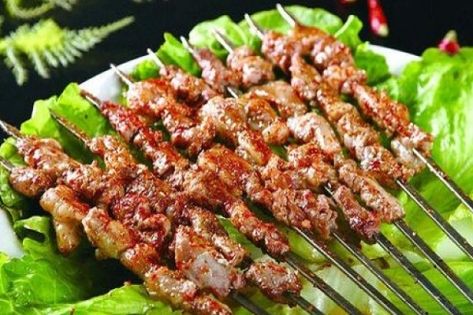
Noodles and Breads: Everyday Staples
Xinjiang’s wheat-based foods reflect its position on the Silk Road:
-
拉条子 (lā tiáo zi): Hand-pulled noodles topped with stir-fried vegetables and meat.
-
拌面 (bàn miàn): Cold noodles mixed with chili, garlic, and vinegar, refreshing in summer.
-
馕 (náng): Traditional flatbread baked in clay ovens, often sprinkled with sesame or onion, eaten daily by locals.
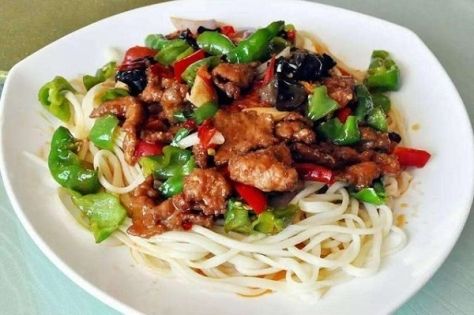
Fruits: Sweet Gifts of the Oasis
Xinjiang’s oasis towns, with abundant sunshine and irrigation, produce some of China’s best fruits.
-
Hami melons, grapes, and pomegranates are famous nationwide.
-
Raisins from Turpan are dried naturally in wind-curing houses, concentrated with sweetness.
-
Fruits are often eaten fresh, dried, or served alongside meat dishes for balance.
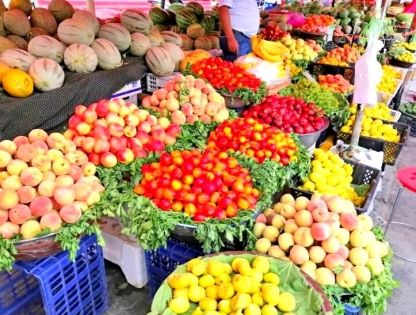
Fruits from Xinjiang
Diversity of Influences
Xinjiang cuisine reflects the traditions of its many ethnic groups:
-
Uyghur cuisine emphasizes pilaf, kebabs, and breads.
-
Kazakh and Kyrgyz nomadic foods focus on dairy, horse meat, and boiled lamb.
-
Hui Muslim communities blend Chinese cooking methods with halal practices.
This diversity creates a vibrant food scene where Middle Eastern spices, Central Asian grilling, and Chinese stir-frying all meet.
Why Xinjiang Cuisine Stands Out
-
Hearty and generous portions suited to a nomadic lifestyle.
-
Distinct flavors of cumin, chili, and onion create bold tastes.
-
Integration of meat, wheat, and fruit provides variety and nutrition.
-
Cultural identity: Meals are often shared communally, reflecting hospitality and tradition.
Conclusion
From a simple bowl of pilaf to the smoky aroma of kebabs, Xinjiang’s food culture tells the story of history, migration, and cultural exchange. It is cuisine that satisfies the stomach while reflecting the soul of a region where east meets west. For travelers and food lovers, tasting Xinjiang is not just about eating—it is about experiencing centuries of Silk Road heritage on a plate.







